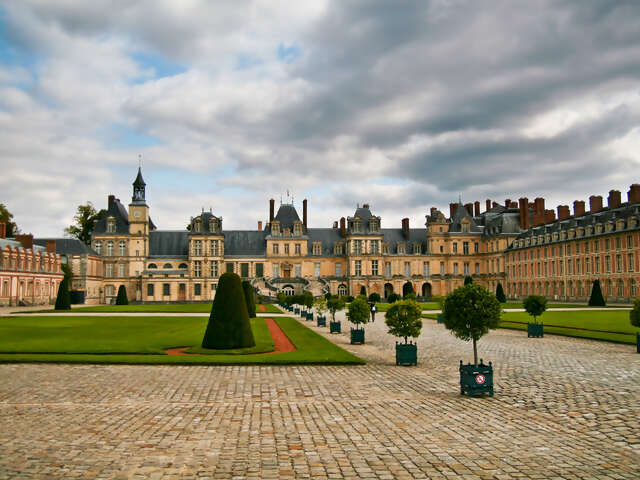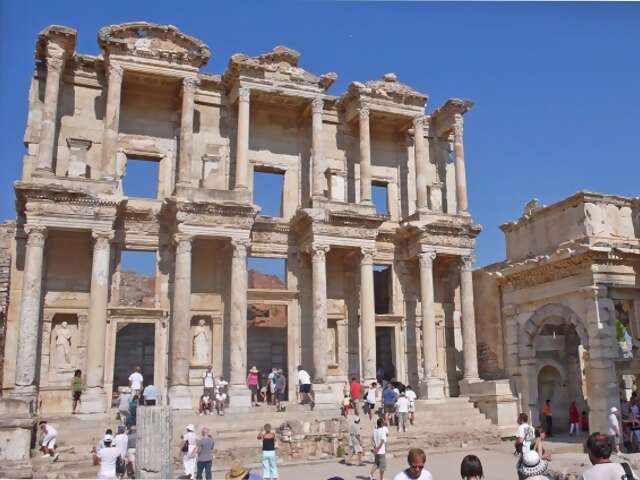Palace and Park of Fontainebleau You Gotta Go Here

The royal hunting lodge of Fontainebleau is located in the heart of a large forest called Ile-de-France. Since the 12th century, the lodge has been used by the French Kings for their hunting holidays. The Palace cum hunting lodge was enlarged and embellished by Francois I in the 16th century with an aim of turning it into the ‘New Rome’. The palace boasts an immensely beautiful park and combines the renaissance architectural style with French Artistic traditions bringing forth one of the most beautiful renaissance architecture.
The construction under Francois was started in 1528. The old royal residence was demolished and in its place, a new grand palace was installed and consisted of five courtyards, buildings and gardens. The earliest building, Cour Ovale, was constructed under the master builder Gilles le Breton from 1528 to 1540.
In the year 1533 to 1540, the master artist Rosso Fiorentino started working on the décor. The frescoes and stucco work of Francois I was translated to the walls of the palace in the Mannerist style. A lot of political propaganda monarchist themes were borrowed from the Greco-Roman myths and fables.
A lot of the Romantic bronzes in the palace are attributed to Fancesco Primaticcio. Among the most famous works of Francesco includes the Cortile of Belvedere, Salle de Bal, the room of Duchess d’Etampes as well as the Galerie d’Ulysse.
Several famous artists’ works are to be found in Fontainebleau including the Hercules of Michelangelo, the Nymphe de Fontainbelau of Benvenuto Cellini and Serlio’s Fontainebleau rustic grotto with telamons.
By virtue of the contact with the Italian architects, painters and sculptors, French artists were led to a radical self-renewal. If Gilles le Breton seems to have escaped their influence at the beginning of the workshop, for Philibert de l'Orme and then for Jacques Androu et du Cerceau, Fontainebleau was the source of definitive revelations. The lesson of the Italian painters inspired yet another generation of artists that of the second school of Fontainebleau, such as Toussaint Dubreuilh, Ambroise Dubois and Martin Fréminet, as the need to enlarge and decorate the immense palace created the ideal conditions for the survival of an artistic centre into the mid-17th century.
Although Gilles le Breton escaped the Italian influence in his work, other Fontainebleau artists such as Toussaint Dubreuilh, Ambroise Dubois and Martin Fréminet seems to have been bitten by the Italian bug from the beginning.
The Garden of Fontainebleau features square flower gardens that are crisscrossed by canals. The landscaping architects who made the gardens seem to have given it their best shot if the beautiful glassy panels are something to go by. A royal domicile, Fontainebleau has an imprint of every monarch that dwelt there including Henri IV, Louis XIII, Louis XV and Louis XVI. So grand is the palace that Napoleon I preferred it above all the other king’s abodes. A visit here is a good study into the French Monarchs.
Get your own travel assistant, help with your trip and personal travel advice, all for free
More Travel Advice Like This
Top Things to See in Barcelona
SightseeingIt's one of the top destinations in Europe, let alone the Mediterranean. Barcelona tops everyone's...
Read MoreHow You Can Help Solve Overtourism - AND Still Enjoy the World's Most Popular Destinations
SightseeingAmsterdam. Venice. Barcelona. Just to name a few. These are spectacular, vibrant, magical cities… reeling under...
Read MoreThe Wonder of Wonders In Rome
SightseeingEphesus turned out to be a real eye-popper. Think of a travel poster showing the...
Read MoreVideo: Get a Bird's-Eye View of One of the Natural Wonders of the World
SightseeingSomething amazing happens when the highest tides in the world arrive in Saint John, New...
Read More


